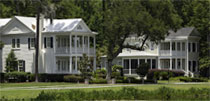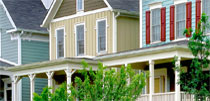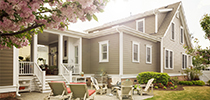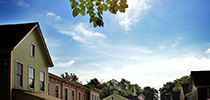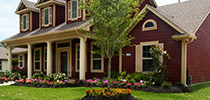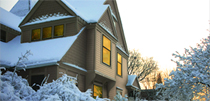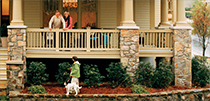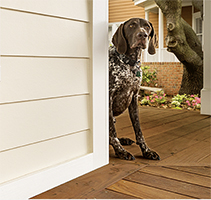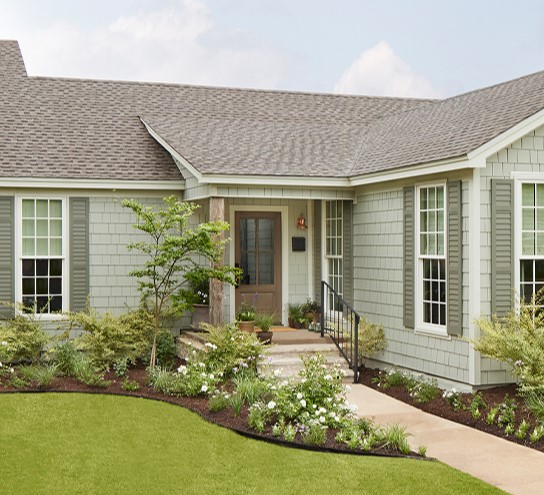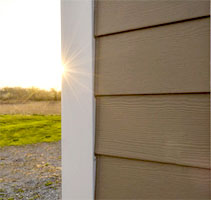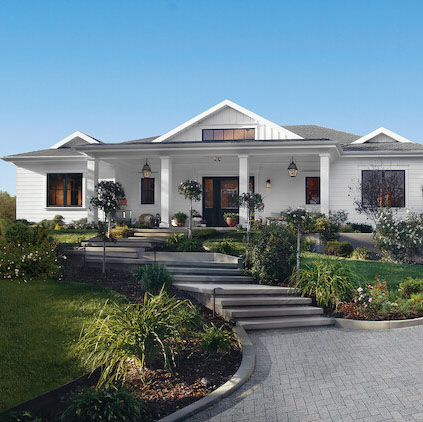
Winter is all about staying warm indoors and keeping the house full of friends and holiday food. Now that the sun is shining longer each day, it’s time to get outside! The grass is starting to perk up and the trees are getting leafy. And you know the perfect spot to put your new garden. But how do you get started? First, you have to figure out what flowers thrive in your zone. Now that your home exterior is refreshed and is better prepared for your climate, make sure your garden is too.
Getting in the Zone
Just like the Hardie® products on your home are Engineered for Climate® to withstand the effects of your local weather conditions, flowers are too. Each flower requires different amounts of water and sunshine; some can survive a cold winter and others can’t. Don’t get your HardieZone® confused with the United States Department of Agriculture’s hardiness zones. These zones are based on numerous weather and temperature factors. Find your hardiness zone at USDA.gov, then check out the tips for your zone below.

ZONES 1 & 2
Plants in the coldest zone need to survive freezing temperatures all the way down to the roots. Hydrangeas and geraniums can survive to about 40 degrees below freezing. You can cover these plants with a frost cloth or regular bed sheet to protect them from the bitter cold, or you can keep them in pots all year round so they can be easily transported inside for the winter.
ZONES 3 & 4
The weather in these regions varies over the course of the year, with cold winters and a short burst of summer, so the plants here require frequent watering. Hardy shrubs and flowers are ideal for these states, but make sure your plants are compatible with your soil type.

Any bulbs you want to plant will have to wait for warmer weather, but you can get started on some vegetables now by potting Brussels sprouts, tomatoes and peppers indoors so they can be ready for a July transplant to the garden.
Baby’s breath, asters and chamomile flowers are good choices for this colder region.
ZONES 5 & 6
These two zones run across the country from the southeast edge of Maine through Kansas and up to Oregon and Washington. Any plants that thrive here will need to hold in moisture.
And if you need a little extra pollinating power in your new garden, consider liatris, marigolds, and sunflowers—they’ll brighten up your yard and bring in the bees!

ZONES 7 & 8
These regions are generally southern, and have warm summers and mild winters—but part of Oregon is also grouped in with zones 7 and 8. These zones get a lot of rain, but the soils down south aren’t the best at retaining water, so aim for a flower that doesn’t require much water to begin with:
Brightly colored daylilies, lavender, and many members of the coreopsis family flourish in these zones.
The soil is warming up so anything you planted indoors can be transferred outside, like your peppers and tomatoes.
ZONES 9 & 10
These areas don’t experience much variation in temperature or moisture—but anyone in Florida can tell you it gets a little humid and rainy during their winters. Flowers here need to stave off fungus and survive soil that drains quickly.
Amaranths, Black-Eyed Susans and Violets will do fine in this warm and humid climate.
Plants and flowers are wonderful additions that can have a significant impact on your home’s overall look, and spring is the perfect time to put some love into your yard. Boost your curb appeal and emphasize your beautiful Hardie® siding by giving your home a stand-out landscape design to match.


